Introduction to Takht-i-Bahi: A Monumental Buddhist Monastery
Takht-i-Bahi, translating to ‘throne of the water spring’ in Persian, stands as a significant archaeological site of an ancient Buddhist monastery located in Mardan, Khyber-Pakhtunkhwa, Pakistan. This site is recognized as one of the most crucial relics of Buddhism in the region once known as Gandhara. Its preservation status is notably exceptional, making it a focal point for scholars and enthusiasts of Buddhist architecture and history.
Get your dose of History via Email
Historical Overview
Founding and Operational Period
The monastery’s inception dates back to the 1st century AD, with its operational period extending until the 7th century AD. This timeline indicates a long span during which the complex served as a center for Buddhist monastic life and learning. The architecture of Takht-i-Bahi is representative of Buddhist monastic centers from its era, showcasing the evolution of religious architecture over several centuries.
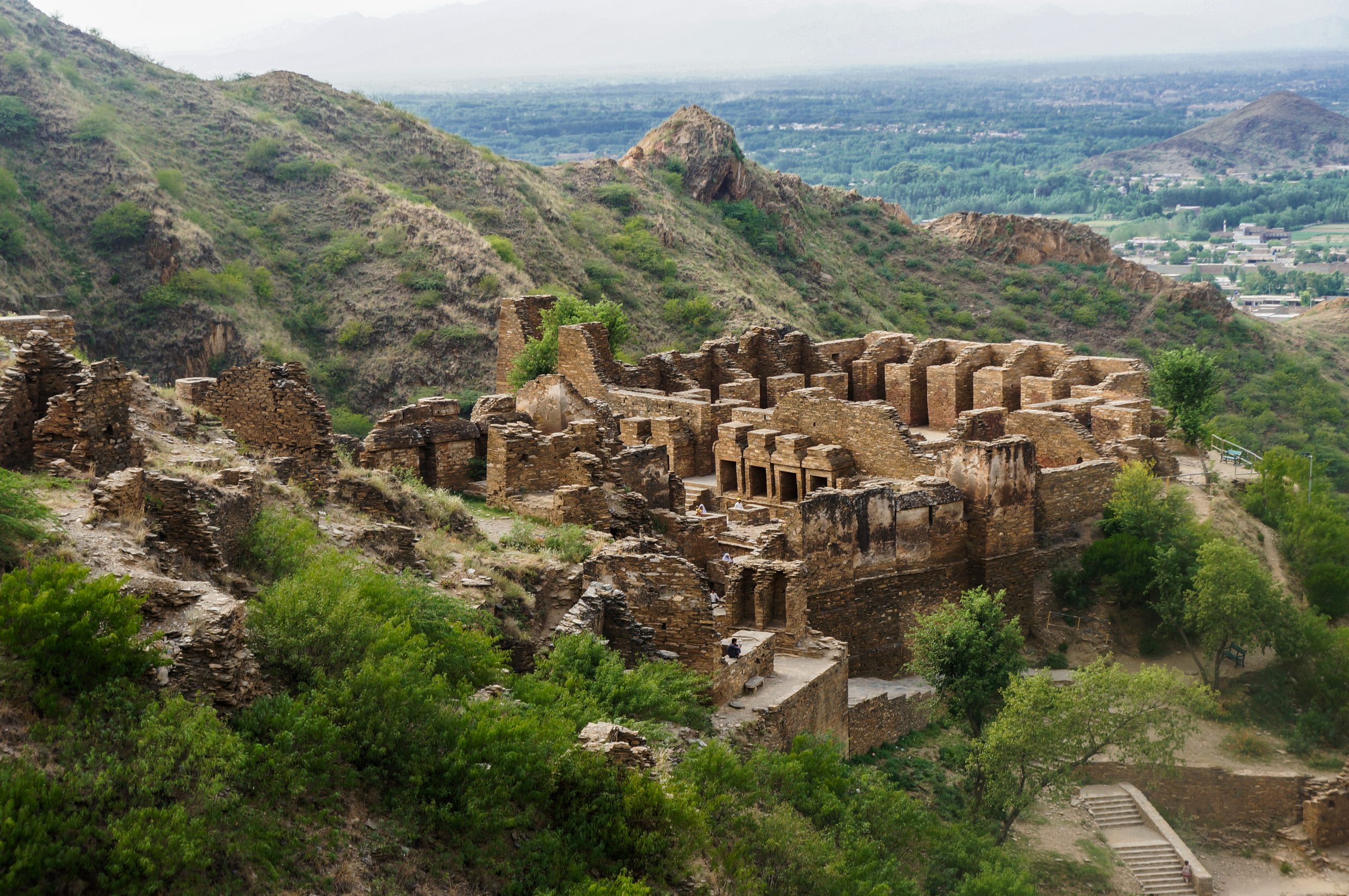
UNESCO World Heritage Site
In 1980, Takht-i-Bahi was designated as a UNESCO World Heritage Site, a testament to its significance in the global cultural heritage landscape. This recognition underscores the site’s architectural, historical, and cultural value, not only to Pakistan but to the world.
Etymology and Location
Name Origin
The etymology of Takht-i-Bahi is subject to various interpretations, with local beliefs suggesting that the name derives from two wells or springs located on the hill. The Persian words ‘Takht’ and ‘Bahi’ combine to mean ‘spring from the top’ or ‘high spring,’ reflecting the site’s physical characteristics. Another interpretation suggests a post-Islamic origin of the name, with ‘Bahi’ indicating beauty or abandonment, implying a once-thriving but now deserted complex.
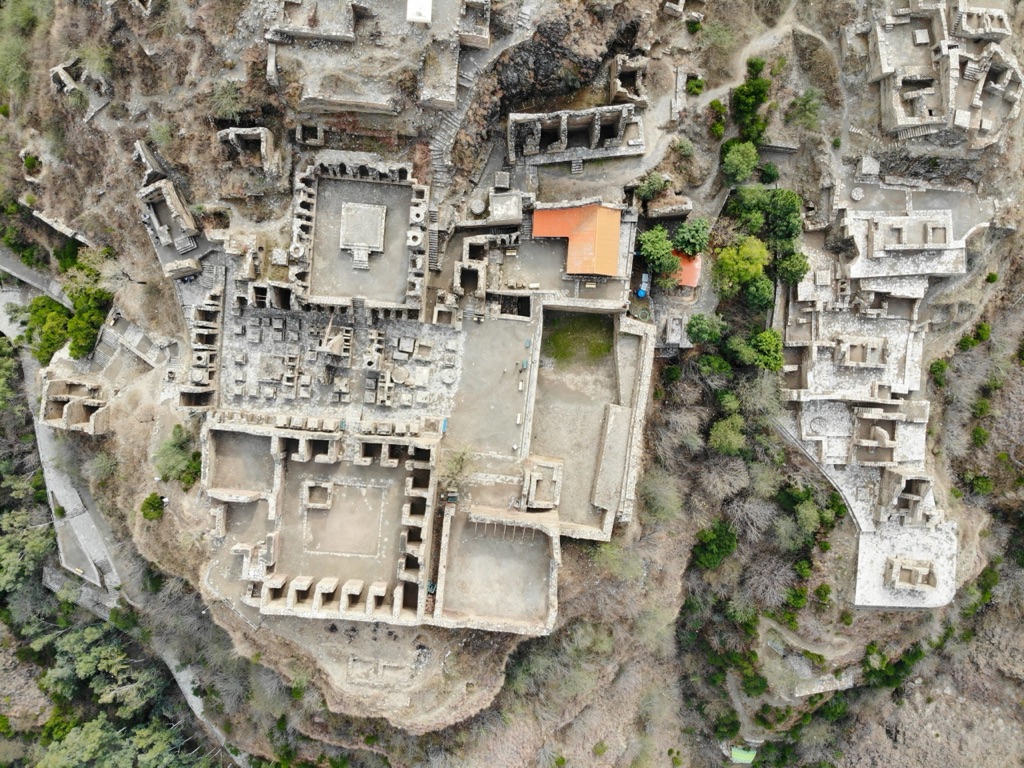
Geographic Setting
Situated approximately 15 kilometers from Mardan in Pakistan’s Khyber-Pakhtunkhwa Province, Takht-i-Bahi’s ruins are perched atop a small hill, offering a strategic vantage point. The site’s location in a region known for agriculture underscores the interplay between natural resources and monastic life.
Architectural Composition
Main Areas of the Complex
Takht-i-Bahi comprises four main areas: the Stupa Court, monastic chambers, a temple complex, and a Tantric monastic complex. These components reflect the diverse functions of the monastery, from religious worship and communal living to meditation practices. The use of local stone and traditional mortaring techniques highlights the adaptation to and utilization of local resources in the construction.
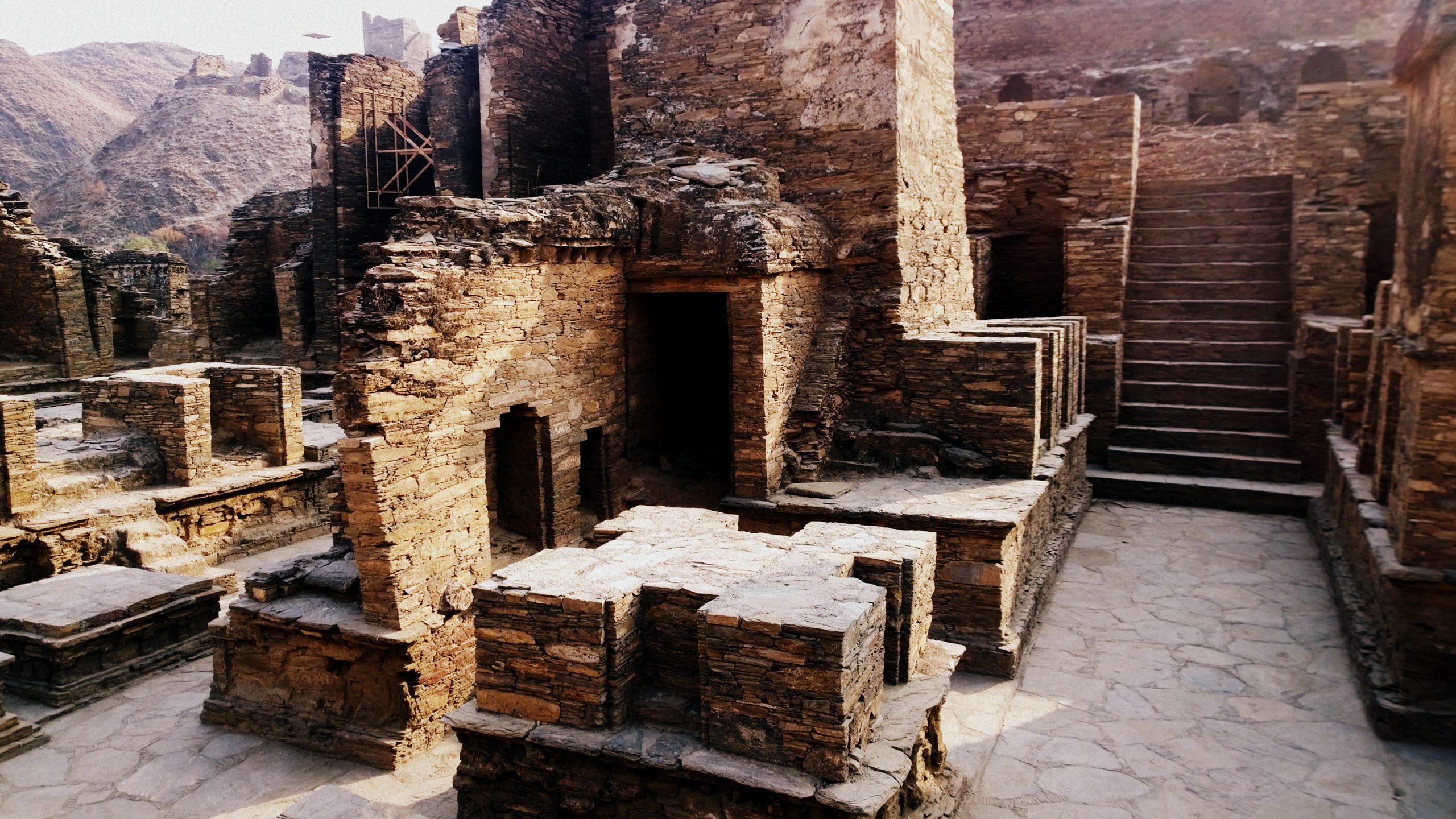
Historical Significance
Chronological Development
The complex’s history is divided into four periods, starting from the 1st century BCE. The initial phase is marked by the foundation of the monastery in the early 1st century AD, with subsequent periods reflecting the influence of various ruling dynasties, including the Kushans and the Huns. Despite destruction by the Huns in the 5th century AD, the monastery remained in use until the 7th century AD, indicating its resilience and continued significance in the region.
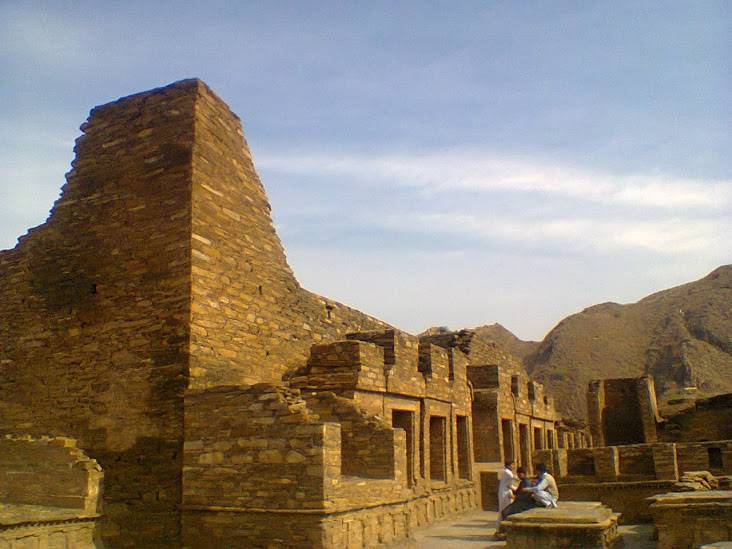
Conservation and Threats
Integrity and Authenticity
Takht-i-Bahi’s high level of preservation has allowed it to retain its authenticity in setting, form, design, and materials. However, the site faces threats from urbanization, uncontrolled vegetation, inadequate drainage, and pollution, necessitating ongoing conservation efforts.
Protection and Management
Protected under the Ancient Preservation Act and the Antiquities Act of Pakistan, Takht-i-Bahi requires careful management to mitigate the impacts of urban expansion and environmental degradation. A Master Plan prepared in 2011 outlines strategies for conservation, visitor management, and boundary revision to ensure the site’s preservation for future generations.
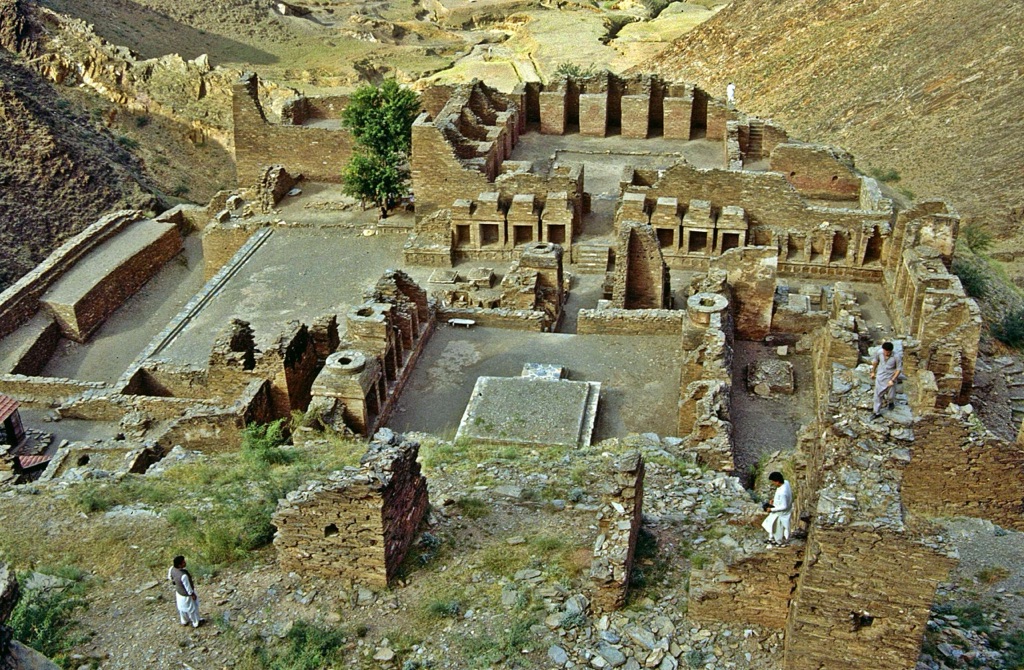
Conclusion
Takht-i-Bahi stands as a testament to the rich Buddhist heritage of the Gandhara region, offering invaluable insights into monastic life, architectural practices, and religious traditions of the time. Its preservation as a UNESCO World Heritage Site highlights the global importance of safeguarding cultural heritage, ensuring that Takht-i-Bahi continues to be a source of knowledge and inspiration.

